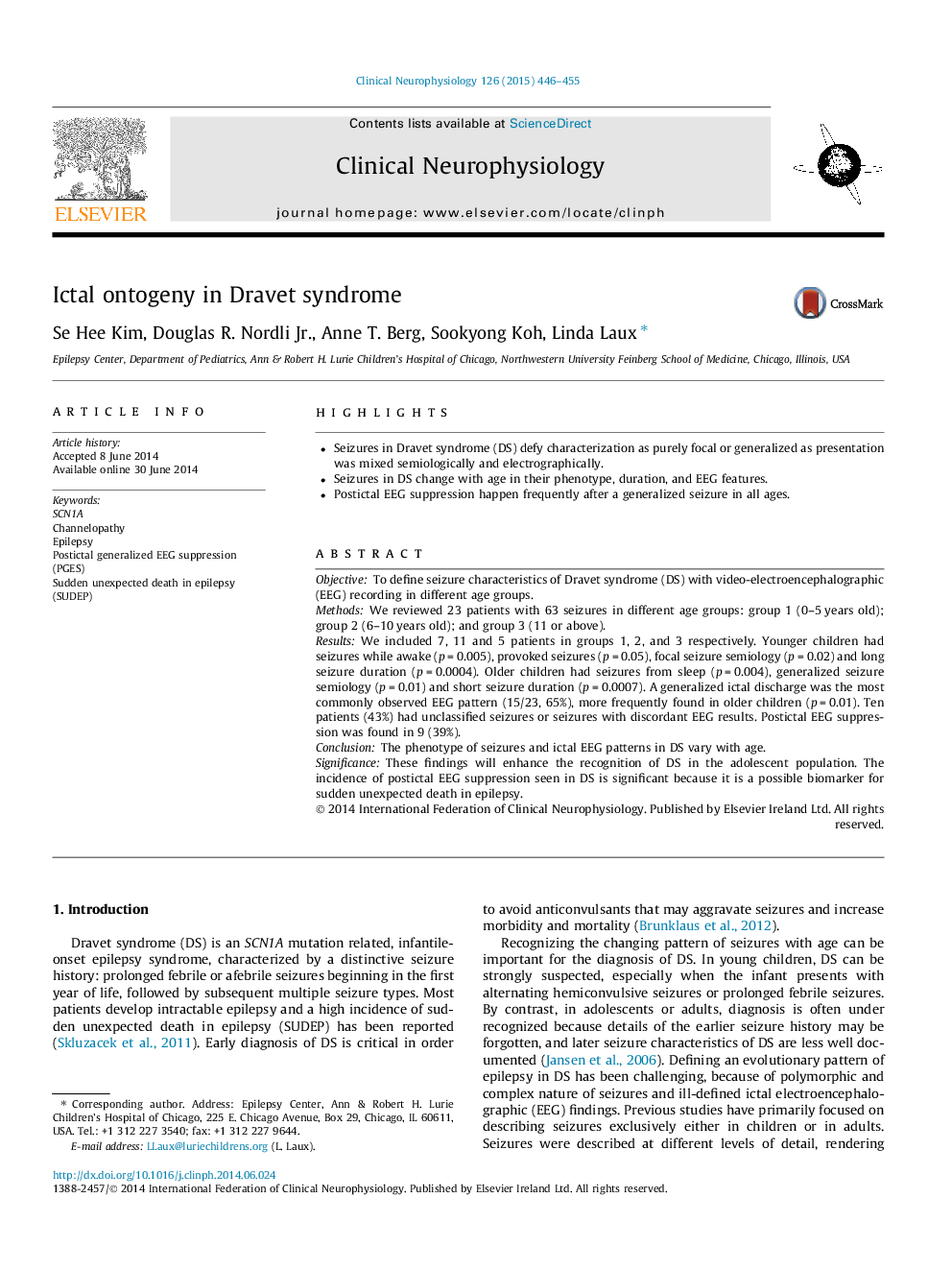| کد مقاله | کد نشریه | سال انتشار | مقاله انگلیسی | نسخه تمام متن |
|---|---|---|---|---|
| 3043703 | 1184984 | 2015 | 10 صفحه PDF | دانلود رایگان |

• Seizures in Dravet syndrome (DS) defy characterization as purely focal or generalized as presentation was mixed semiologically and electrographically.
• Seizures in DS change with age in their phenotype, duration, and EEG features.
• Postictal EEG suppression happen frequently after a generalized seizure in all ages.
ObjectiveTo define seizure characteristics of Dravet syndrome (DS) with video-electroencephalographic (EEG) recording in different age groups.MethodsWe reviewed 23 patients with 63 seizures in different age groups: group 1 (0–5 years old); group 2 (6–10 years old); and group 3 (11 or above).ResultsWe included 7, 11 and 5 patients in groups 1, 2, and 3 respectively. Younger children had seizures while awake (p = 0.005), provoked seizures (p = 0.05), focal seizure semiology (p = 0.02) and long seizure duration (p = 0.0004). Older children had seizures from sleep (p = 0.004), generalized seizure semiology (p = 0.01) and short seizure duration (p = 0.0007). A generalized ictal discharge was the most commonly observed EEG pattern (15/23, 65%), more frequently found in older children (p = 0.01). Ten patients (43%) had unclassified seizures or seizures with discordant EEG results. Postictal EEG suppression was found in 9 (39%).ConclusionThe phenotype of seizures and ictal EEG patterns in DS vary with age.SignificanceThese findings will enhance the recognition of DS in the adolescent population. The incidence of postictal EEG suppression seen in DS is significant because it is a possible biomarker for sudden unexpected death in epilepsy.
Journal: Clinical Neurophysiology - Volume 126, Issue 3, March 2015, Pages 446–455